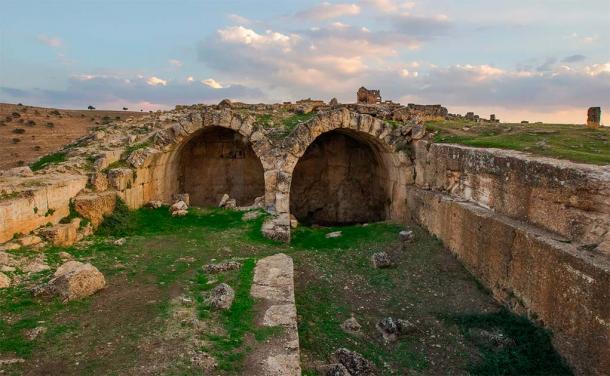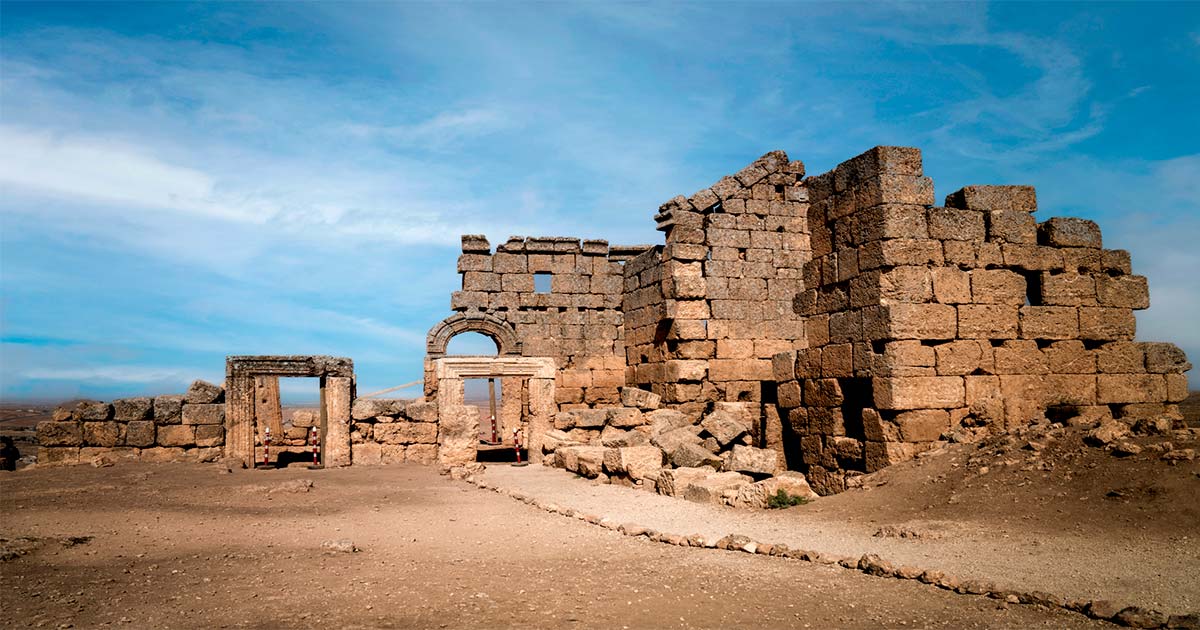Massive Multi-Storey Structures Found Below Ancient Castle in Turkey
Archaeologists have uncovered vast structures beneath the ancient Zerzevan Castle in Turkey's southeastern Diyarbakir province, revealing startling remnants from the Roman era. These expansive, multi-level edifices could house thousands of people beneath the castle's historic foundations, and there is at least 100 more hidden beneath the surface!
Almost a Decade: Digging Into the Past
"I first came to Diyarbakir in 2005," says Aytaç Coskun [via NPR], the leader of this 9-year-long excavation at the site, "and when I saw this hill, I saw some pieces of artifacts, and I knew no excavation had been done before. So as soon as I saw it, I knew it had to be a dig because there must be something significant underneath. He added, “The digging we're doing inside the castle walls is 57,000 square meters [68,171 square yards]. It's a huge area. And outside of it...is (something) like 10 million square meters [3.86 square miles].”
Daily Sabah reported that excavations have been ongoing at the site for nine years. Among the findings have been the remnants of fortifications in the form of city walls, observation and defense towers, a Roman-era bronze baptismal bucket, a sprawling rock altar, an underground church, and a water canal stretching for at least several miles. They have also unearthed an Assyrian-era stamp, a solemn official seal etched into rock that dates back around three millennia.
Excavation and restoration team looks into a microscope while studying a coin found at the archaeological site
A bronze baptismal bucket found at the Zerzevan Castle site, currently on display at the Archaeology Museum of Diyarbakir. pic.twitter.com/q99jW2Fmej
— Sarah (@Sarah404BC) September 2, 2023
Zerzevan: From the Assyrians to the Romans
Zerzevan Castle, also known as Samachi Fortress in ancient times, boasts a rich and multifaceted history, dating back to the ancient Assyrian era. Originally established as a Roman Empire border garrison, it evolved into a bustling military settlement during the third century AD. Over time, this historical site witnessed a succession of cultures and rulers, as it came under the control of Islamic armies, adding layers of historical importance to its enduring legacy. The castle, as it stands today, primarily dates back to the Roman era, particularly the period between the 3rd and 5th centuries AD.
During times of peace and tranquillity, approximately 1,500 people, comprising both military personnel and civilians, made their homes within the castle's protective walls. However, in times of strife, the population swelled and up to 10,000 individuals from the surrounding region sought refuge within the castle's secure embrace.
This influx of people likely necessitated the creation of expansive underground living areas. To date, six residential complexes have been excavated within the castle's fortifications, but there are around 100 more hidden beneath the surface, each promising to shed new light on this extraordinary mode of habitation.
The team has also unearthed administrative buildings, which served as the nerve center of governance and organization, which offer some kind of glimpse about the organization of power in this ancient society. Finally, armories, and underground places of worship have been unearthed – they respectively shed some light on military preparedness and the cultural and religious practices of the citizens, reports NPR.
- Mithraism May Become a Bit Less Mysterious with New Temple Discovery in Turkey
- Home to 20,000, But Who Built it? The Underground City of Derinkuyu

Massive underground structures were found at Zerzevan Castle, Turkey. Source: selim / Adobe Stock.
Zerzevan Castle: More to Come
The historical allure of Zerzevan Castle has proven to be a significant attraction for tourists. In just a span of five months, over 150,000 visitors have flocked to the site. The numbers are expected to surge with the completion of a visitor reception center adjacent to the castle. This center, projected to be finished within the year, is geared towards accommodating an impressive one million visitors every year. Such a spike in tourism will undeniably provide a major boost to the local economy, offering numerous employment opportunities to the locals.
Coşkun emphasized the vast potential the site holds for future archaeological discoveries. To date, excavations have only covered around 10% of the surface area within the castle walls. Yet, the surroundings have revealed living quarters, a canal, a necropolis – where prominent families laid their loved ones to rest – and ceremonial grounds. Coşkun remains confident that the site will yield even more insights into the past, as excavations are planned to continue vigorously for the next three decades.
The anticipation surrounding the upcoming digs at Zerzevan Castle is palpable. Coşkun expressed his excitement about the myriad surprises that await them. The team has adopted advanced ground-penetrating radar scans to aid their exploration efforts. Their primary goal is to unravel the mysteries of the past, uncovering the secrets that the Roman-era castle holds. With every layer unearthed, they hope to answer the myriad questions about the epoch that Zerzevan Castle was a pivotal part of.
Top image: Zerzevan Castle, Turkey. Source: Ayse / Adobe Stock.
By Sahir Pandey
References
Daily Sabah. 2023. Discoveries under Türkiye's Zerzevan castle spark new excavations. Available at: https://www.dailysabah.com/turkiye/discoveries-under-turkiyes-zerzevan-castle-spark-new-excavations/news.
Kenyon, P., Saracoglu, G. 2023. Archaeologists in Turkey have identified massive structures below a Roman-era castle. Available at: https://www.npr.org/2023/09/01/1191263572/turkey-archaeology-zerzevan-castle-discoveries.

















